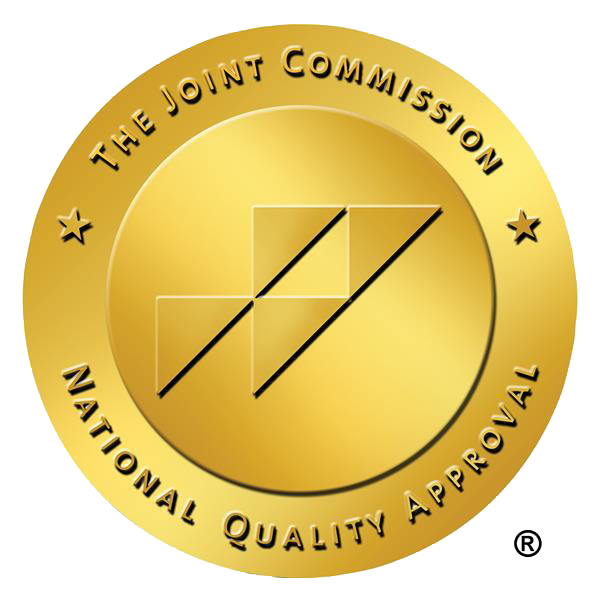The Interplay of Causes Behind Mood Disorders
Mood disorders aren’t caused by a single factor; instead, they result from a complex mix of influences. Genetic components contribute approximately 30-40% to the risk of developing bipolar disorder, with certain specific genes linked to mood disorders as identified through twin, family, and adoption studies.
However, it’s not all in the genes. Environmental triggers, like stressful life events, especially during critical developmental periods such as puberty, can act as catalysts for mental disorders in individuals with genetic predispositions.
Hormonal factors and the use of certain drugs can also contribute to the onset of mood disorders,.
Biological Underpinnings
Our biological makeup can significantly influence the development and progression of mood disorders. For instance, depression has been linked to lower levels of neurotransmitters such as serotonin, norepinephrine, and dopamine, which are chemicals that help our brain cells communicate with each other. The discovery of the MAGE-D1 gene association with depression-like behaviors in mice suggests a potential genetic contributor to mood disorders in humans.
On a hormonal level, cortisol levels tend to rise due to overactivation of the hypothalamic-pituitary-adrenal (HPA) axis in chronic stress, a risk factor for depression. Changes in neuroimmune factors like cytokines have also been associated with mood disorders.
Psychological and Social Contributors
Psychological and social aspects of our lives greatly influence the development of mood disorders. Anxiety, for instance, often occurs alongside mood disorders, adding another layer of complexity to the diagnosis and management.
Certain personality traits, specifically those related to borderline and obsessive-compulsive disorders, are commonly observed in individuals with depressive disorders. Additionally, early life events such as attachment issues and childhood adversity have been linked with a higher likelihood of developing mood disorders like depression.
Path to Diagnosis: How Are Mood Disorders Diagnosed?
Diagnosis of mood disorders requires a comprehensive evaluation by a mental health professional, potentially including a physical exam, lab tests, and an in-depth psychiatric evaluation. These assessments aid in identifying the specific type of mood disorder and its severity.
The diagnosis process is a collaborative effort. Mental health professionals often collaborate with child and adolescent psychiatrists or the patient’s existing physicians to integrate medication management into the treatment and diagnosis of mood disorders.
Evaluation Tools and Criteria
The Diagnostic and Statistical Manual (DSM) criteria and various rating scales are pivotal in diagnosing and evaluating the severity of mood disorders. For instance, the Hamilton Depression Rating Scale (HAM-D) is a commonly used scale for assessing depression, where a score of 0 to 7 is considered normal and scores above 20 indicate the need for intervention.
The Montgomery-Asberg Depression Rating Scale (MADRS) measures the severity of depression, with score categories that identify:
- Normal
- Mild depression
- Moderate depression
- Severe depression
These tools provide a structured way to assess the symptoms and their impact on an individual’s life.
Distinguishing Between Disorders
Distinguishing between different disorders can be a challenging task due to symptom overlap. For instance, generalized anxiety disorder can be mistaken for a mood disorder when anxious ruminations mimic racing thoughts typical of a manic episode. Certain personality disorders share symptoms with bipolar disorders such as labile mood, impulsivity, as well as delusions and hallucinations, which complicates the distinct diagnosis of bipolar disorder.
ADHD and bipolar disorder also have symptom overlap, including increased psychomotor activity, difficulty interrupting speech, distractibility, and a decreased need for sleep.
Navigating Treatment Options for Mood Disorders
When it comes to treating mood disorders, comprehensive care is key. Atlantic, for instance, provides specialized therapy and medication management as part of their treatment services. This multi-faceted approach ensures that individuals with mood disorders receive the help they need to manage their condition effectively.
Therapeutic Interventions
Therapeutic interventions form a core part of the mood disorder treatment process. Cognitive behavioral therapy (CBT) focuses on identifying and changing negative thought patterns and behaviors, and is widely used to treat mood disorders.
Meanwhile, interpersonal therapy (IPT) improves personal relationships as a means to alleviate mental health symptoms, particularly in the treatment of major depressive disorder. Other therapeutic interventions include dialectical behavior therapy (DBT), radically open dialectical behavior therapy (RODBT), and mindfulness-based interventions,,.
Medication Management
Medication is a key component in mood disorder management. However, it’s not simply about taking the prescribed pills. Adherence to medication is critical for recovery from mania and depression.
Moreover, regular communication between healthcare professionals is important for a positive treatment response in the management of mood disorders. This communication ensures that the medication’s efficacy is monitored and adjusted as needed, promoting optimal patient care.
Innovative Treatments
In the field of mental health, innovation is particularly important for treatment-resistant cases. Brain stimulation therapies, such as electroconvulsive therapy (ECT) and transcranial magnetic stimulation (TMS), are considered for individuals with treatment-resistant depression, especially when selective serotonin reuptake inhibitors and other medications have proven ineffective.
Esketamine therapy, an innovative FDA-approved treatment acting on glutamate neurotransmitters, aids in building new neural pathways to treat depression. These innovative treatments offer hope for individuals who have not responded to traditional therapies.
Living with a Mood Disorder: Support and Strategies
While living with a mood disorder presents challenges, effective management is possible with the right strategies. Keeping a close watch for subtle changes in mood, sleeping patterns, energy level, and thoughts can help prevent a minor mood change from becoming a full-blown episode.
Having an emergency action plan that includes a list of emergency contacts and treatment preferences can provide a sense of control during a crisis. And maintaining a daily schedule can help stabilize mood swings associated with bipolar disorder.
Building a Support System
For effective management of mood disorders, a strong support system is essential. Psychoeducation helps patients and their loved ones understand mood disorders better, which aids in creating a support system suited to their needs.
Professional support networks, such as Atlantic Behavioral Health, also play a vital role in managing mood disorders. They provide comprehensive psychiatric and mental health services, which are key components of a mood disorder patient’s support network.
Lifestyle Modifications
Therapeutic interventions and medication for mood disorders can be significantly enhanced by lifestyle modifications. Maintaining a balanced diet with regular meal times can support mood stabilization, and omega-3 fatty acids, found in fish and flaxseed oil, have been linked to reduced depression symptoms.
Regular exercise can improve mood, increase energy levels, and help manage stress,. Practices like yoga and tai chi can particularly benefit those with mood disorders by enhancing mindfulness and reducing stress. And reducing or avoiding alcohol and caffeine can minimize mood swings related to mood disorders.
Living with a mood disorder can feel like being on a never-ending emotional roller coaster. However, with the right understanding, diagnosis, treatment, support, and lifestyle modifications, it is possible to manage these disorders effectively and lead a fulfilling life. Remember, there is no shame in seeking help. Like a lighthouse guiding ships through turbulent seas, professional help can guide you through the stormy emotional landscape of mood disorders and into calmer waters.
Frequently Asked Questions
What are mood disorders?
Mood disorders are mental health conditions that cause significant disturbances in emotional states, including periods of intense euphoria or severe depression.
How are mood disorders diagnosed?
Mood disorders are diagnosed through a comprehensive evaluation by a mental health professional, which may include a physical exam, laboratory tests, and a psychiatric evaluation. This helps in determining the presence and type of mood disorder.
What are some common mood disorders?
Common mood disorders include major depression, bipolar I and II disorders, and persistent depressive disorder. These are the most prevalent mood disorders.
How are mood disorders treated?
Mood disorders are typically treated through a combination of therapy, medication, and lifestyle changes to manage symptoms effectively.







